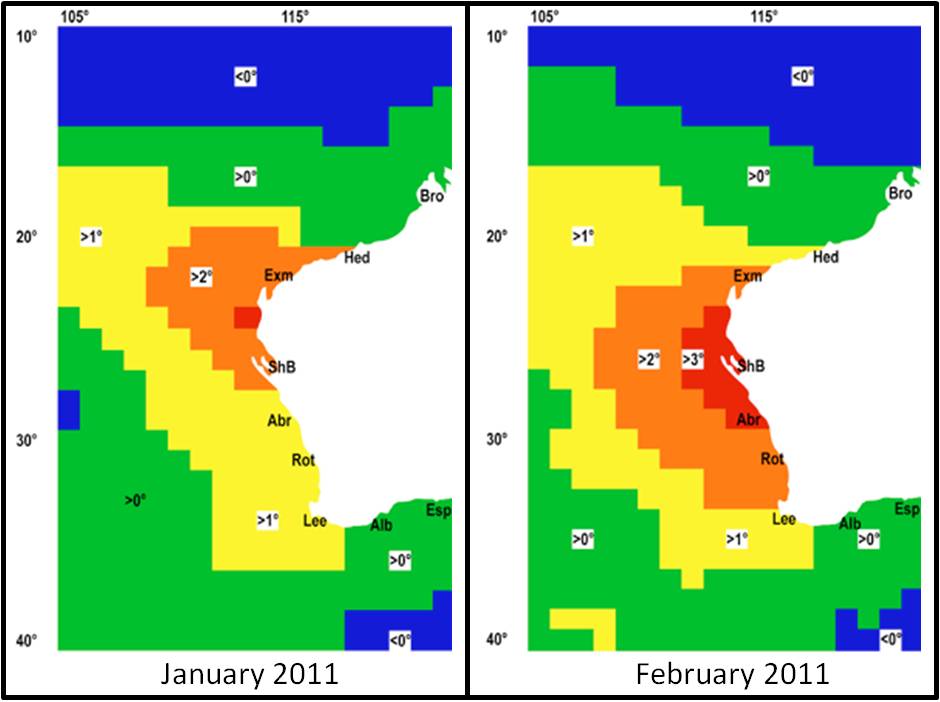Home > Browse by Institution > Western Australia Department of Fisheries > The summer 2010/11 'marine heat wave' off Western Australia
The summer 2010/11 'marine heat wave' off Western Australia
- Western Australia Department of Fisheries
- Western Australia Department of Fisheries
Towards the end of 2010, unusually warm waters were recorded off the Western Australian coastline. By early 2011 it was clear that a significant warming event was taking place, with sea-surface temperature (SSTs) and in situ temperature logger measurements showing that temperatures were > 3°C above the normal summer averages in some regions (Figure 1). While sudden changes in water temperature have previously been recorded off the Western Australian coast, the summer 2010/11 temperatures were the most extreme both temporally and spatially – being described as a ‘marine heat wave’ that coincided with an extremely strong La Niña event and a record strength Leeuwin Current.
Due to widespread reports of fish kills, coral bleaching (including at Ningaloo), and of tropical species being found further south than their normal recorded range, a workshop was held on the 5 May 2011 at the Western Australia Department of Fisheries (Perth) to review the oceanographic, ecological and fisheries consequences of the 'marine heat wave'. The objectives of the workshop were to:
- Review the oceanographic and meteorological information associated with the 'marine heat wave'.
- Examine the consequences for the marine plants and animals.
- Bring researchers together to determine if there were synergies in research activities associated with the 'marine heat wave'.
As such, the preliminary report (see below) documents that the observed and expected biological consequences based primarily on anecdotal information collected during or directly after the passage of the ‘marine heat wave’ include:
- fish and invertebrate deaths
- coral bleaching
- extensions and contractions in species distributions
- variations in recruitment and growth-rates
- impacts on trophic relationships and community structure
- variations in catch rates of exploited species
It is anticipated that continued research and monitoring programs will provide more comprehensive details of the effects of the summer 2010/11 ‘marine heat wave’.
For more detailed information on this study, see Pearce A, Lenanton R, Jackson G, Moore J, Feng M and Gaughan D (2011), or contact the corresponding author, Dr Alan Pearce.
Dataset details
| Custodian | Dr Alan Pearce |
| Owner institution | Western Australia Department of Fisheries (http://www.fish.wa.gov.au/) |
| Spatial extent | Broome (17° 57' S, 122° 14' E) to Esperance (33° 52' S, 121° 54' E) |
| Data collection | January 2010 to March 2010 |
| Copyright | Copyright remains with the data owner(s) |
| Reference | Click here |








